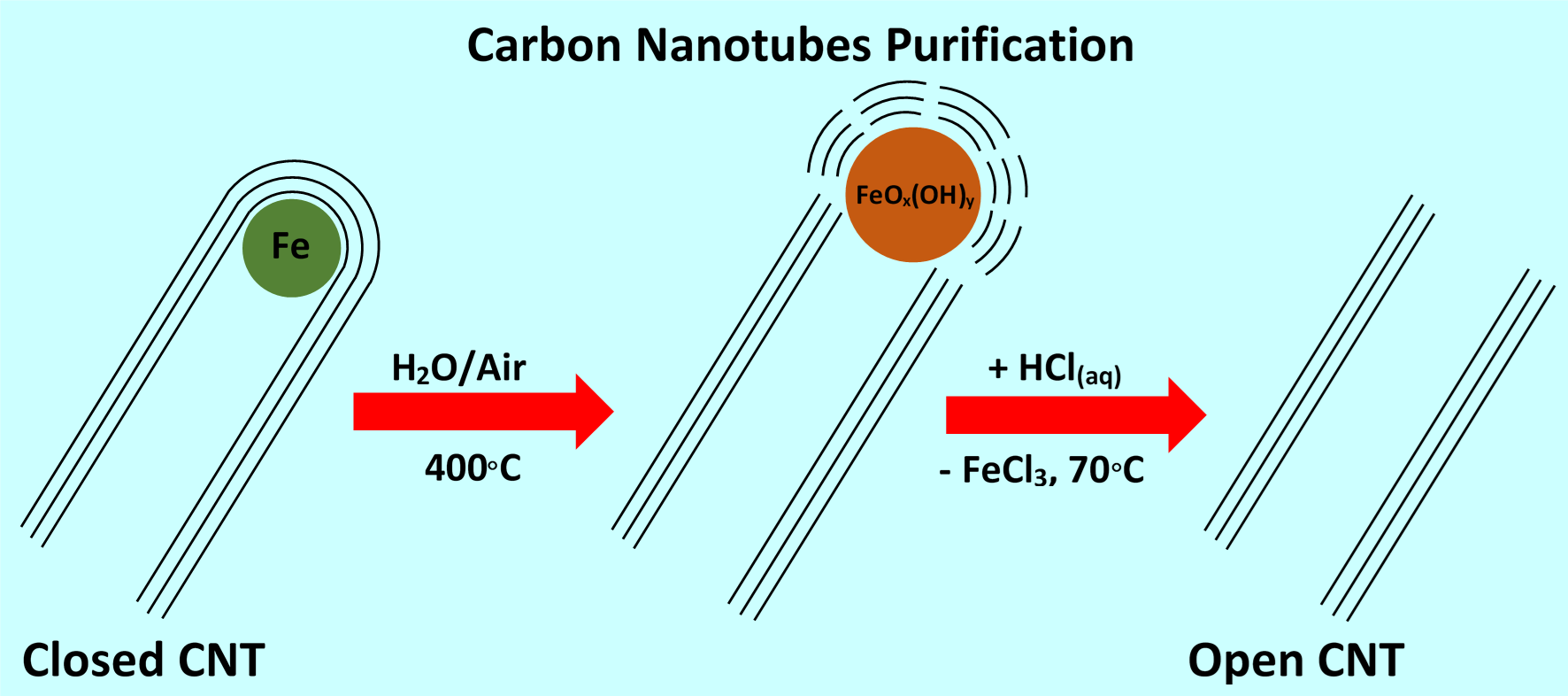Ultralong carbon nanotubes (UCNTs) are highly demanded for nanocomposites applications because of their magnificent physical and chemical properties. UCNTs are synthesized by catalytic chemical vapor deposition (CCVD) method and, before using as fillers in nanocomposites, should be purified from residual catalyst and non-CNT particles without significant destruction or scissoring of UCNTs. The role of water vapor for purification of UCNTs is investigated, the importance of water assistance in this process is confirmed. It was shown that wet air treatment of products of UCNTs CCVD synthesis under mild conditions can be used to decrease sufficiently residual catalyst content without significant carbon losses in comparison with the results obtained with dry air, while the residual iron content was shown to influence heavily on the subsequent oxidation of different forms of carbons, including UCNTs. The increasing of D/G ratio of Raman spectra after wet air treatment of products of UCNTs CCVD synthesis makes it possible to conclude that iron catalyst particles transform into iron oxides and hydroxides that caused inner structural strains and destruction of carbon shells improving removal of the catalyst particles by subsequent acid treatment. UCNTs purification with water assistance can be used to develop economically and ecologically friendly methods for obtaining fillers for nanocomposites of different applications.

